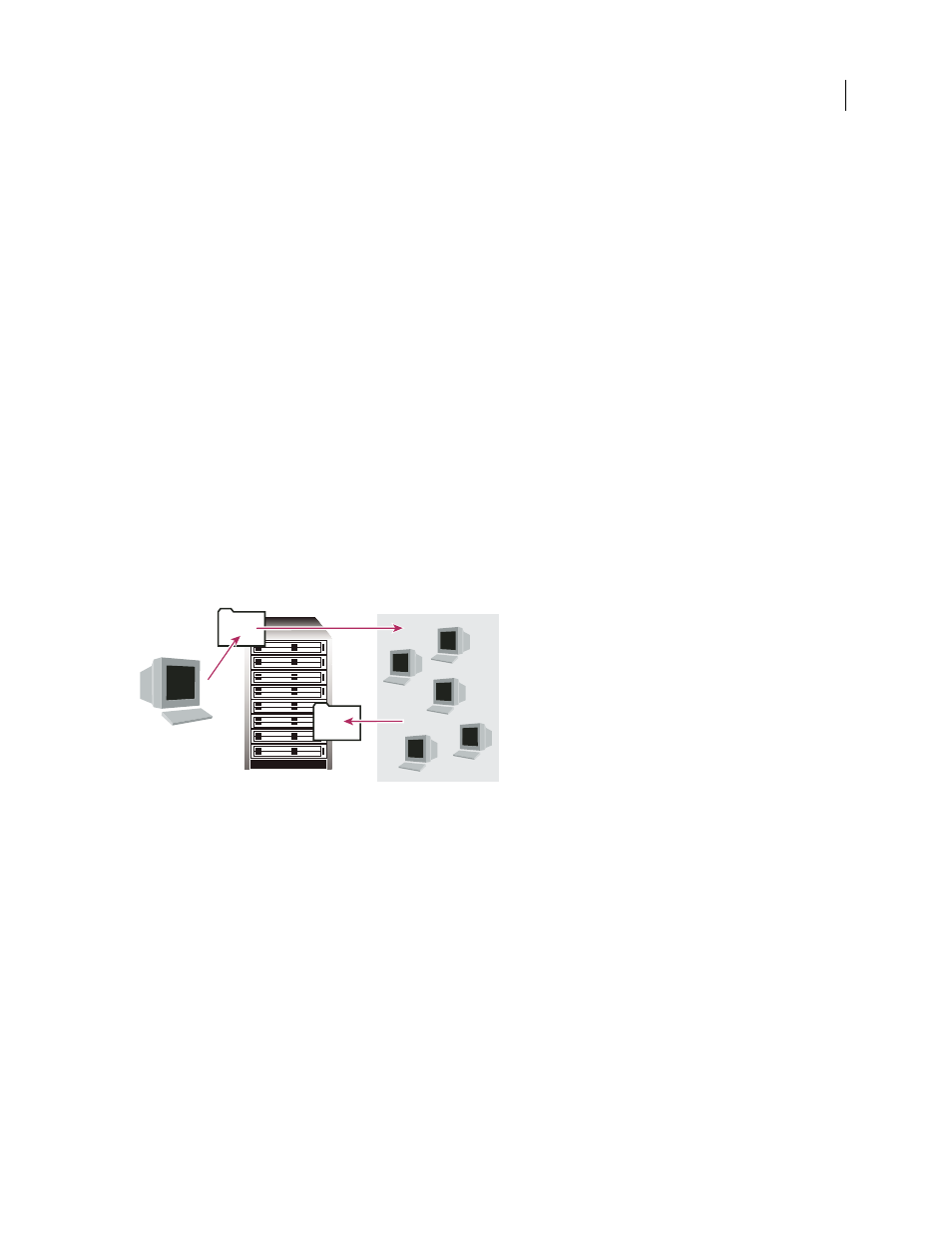Network rendering with watch folders – Adobe After Effects CS3 User Manual
Page 630

AFTER EFFECTS CS3
User Guide
625
Network rendering with watch folders
You can render one or more compositions from a project using multiple computers over a network in a fraction of
the time that a single computer would require. Network rendering involves copying the project and source files to a
networked folder, and then rendering the project.
If you have a full licensed copy of After Effects, you can set it up to work with render-only versions of After Effects
called render engines. Your license entitles you to install as many copies of the render engine as you want on your
network, as long as one activated copy of After Effects is installed on that network.
You install render engines in the same manner as the full version of the application, but you do not activate them.
You run the render engine using the Adobe After Effects Render Engine shortcut in the Adobe After Effects CS3
folder. (See “Installation” on page 1.)
Note: For more information, see the Read Me file on the installation DVD or visit the Adobe After Effects support website
at
You cannot use a watch folder and multiple render engines to simultaneously render a single movie file. However,
you can use multiple render engines to render a movie as a sequence of still-image files. You can then use a post-
render action to create a single movie file from that still-image sequence. (See “Use a post-render action” on
page 602.)
When you have multiple render engines on multiple computers monitoring a watch folder, they cooperate to achieve
optimal efficiency. If your queued render items are set to Skip Existing Files (a Render Settings option), the render
engines all work on a single render item at once—no render engine renders any frame another render engine has
already worked on. If this option is not selected, each render engine handles a render item itself.
Computer with full version of After Effects (A) saves a project and all source files to a folder (B) on a server. Computers with the render engine
installed (C) open the project and render a still-frame sequence to a designated output folder (D) on the server.
Network considerations
When working with multiple render engines on multiple computers, keep the following guidelines in mind:
•
When possible, identify folders using absolute file paths so that the paths are correctly identified for all render
engines. This may mean mapping network drives to a particular drive letter on all machines (for example,
H:\renders\watch\). Avoid using relative paths (for example, \\renders\watch).
•
Each Macintosh computer monitoring the watch folder must have a unique name. This means that you should
rename your computers to not use the default name.
•
Make sure that all servers and clients (computers monitoring the watch folder) have hard disks with unique names.
•
Do not use the same computer to serve a watch folder and to run After Effects in Watch Folder mode. Use a
dedicated server that’s accessible to all render engines to serve your watch folder.
A
B
D
C
